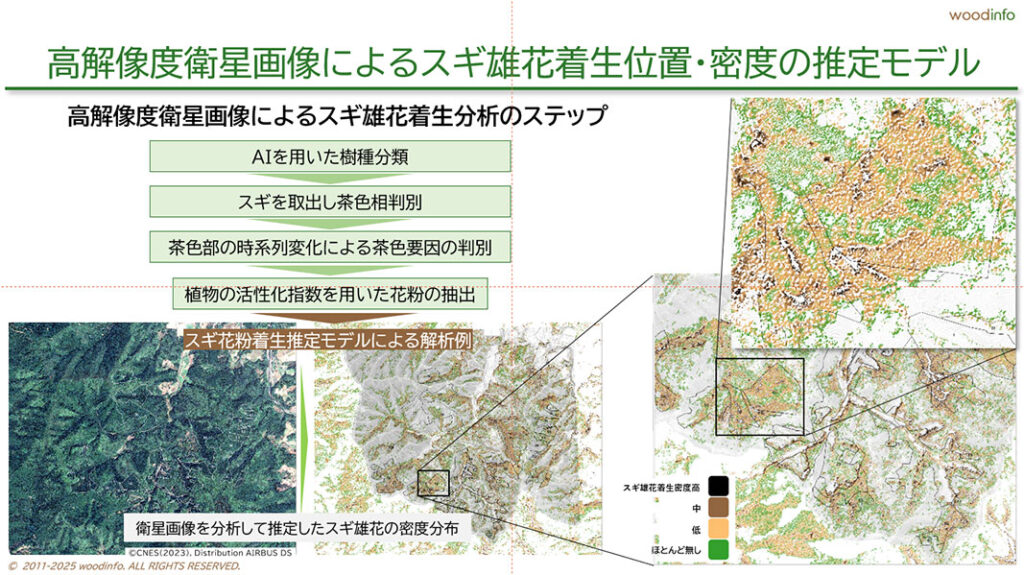Updated by "Forest Circular Economy" Editorial Board on April 10, 2025, 11:53 AM JST
Editorial Board, Forest Circular Economy
Forestcircularity-editor
We aim to realize "Vision 2050: Japan Shines, Forest Circular Economy" promoted by the Platinum Forest Industry Initiative. We will disseminate ideas and initiatives to promote biomass chemistry, realize woody and lumbery communities, and encourage innovation in the forestry industry in order to fully utilize forest resources to decarbonize the economy, strengthen economic security, and create local communities.
On April 9, woodinfo officially released its "Pollen Source Analysis Service," which visualizes the source of cedar pollen with high accuracy. The service identifies the amount of pollen generated by an "integrated monitoring system" that combines satellite images, drones, and actual ground measurements. The service enables rational review of management policies for target forests, and aims to simultaneously support pollen allergy control and forest management, as well as the creation of carbon credits.
The "Integrated Monitoring System" is unique in that it combines and analyzes multiple data sources: satellite images covering a wide area, a drone capable of close-up observation, and ground measurements to obtain detailed field information. By analyzing these data sources in an integrated manner, the system can visualize with high precision the amount of male flowers (the source of pollen generation) and the amount of pollen dispersal in cedar forests, which have been difficult to determine in the past.

With support from the Ministry of Economy, Trade and Industry's FY2023 and 2024 "Research and Development Project for Space Industrial Technology Information Infrastructure", woodinfo conducted a verification experiment in a municipal forest in Nagato City, Yamaguchi Prefecture, and in the Takasumi Experiment Forest attached to Kagoshima University. As a result of the verification, a model that estimates the position and density of male flower attachment using only satellite images recorded a 71% correct response rate. The reliability of this result has been confirmed through verification work on the ground, indicating that this technology is at the practical stage as a remote sensing analysis technology for wide-area forests.

This service has the potential to contribute to solving problems in many areas, aiming to simultaneously realize "pollen allergy control × forest management × carbon credits".
Specifically, the highly accurate identification of pollen sources will enable the planning and implementation of efficient pollen allergy countermeasures based on scientific evidence. In addition, a detailed understanding of the status of forest resources will directly lead to the advancement of forest management, such as optimization of logging plans and sustainable forest management. Furthermore, technologies that accurately monitor forest conditions will enhance the accuracy of CO2 absorption assessments and create new value in the carbon credit market.

The use of satellite data and AI is accelerating digital transformation (DX) in various industries, and woodinfo's new service is expected to be a new step forward in enabling objective, data-driven decision-making in forest management, a field that has often relied on experience and intuition. The new service by woodinfo is expected to be a new step forward in enabling objective, data-driven decision-making in the field of forest management, which has traditionally relied on experience and intuition.